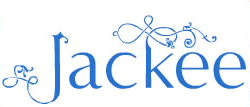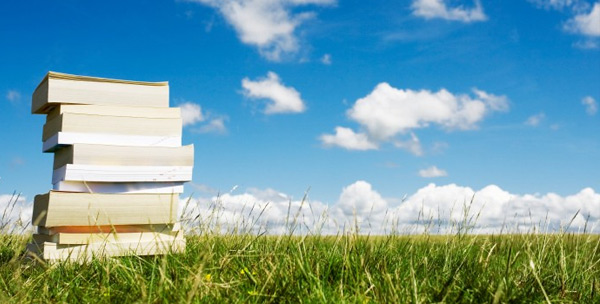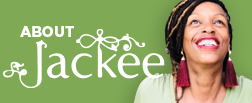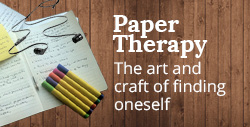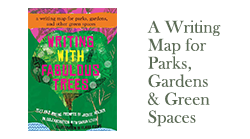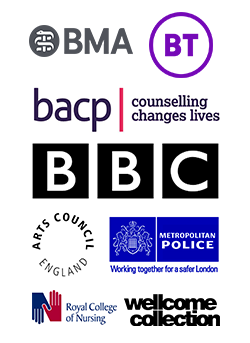Writing
Sunday, August 10th, 2014
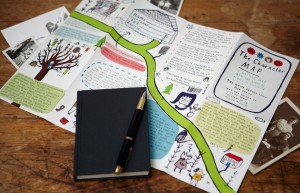
The Character Writing Map: Click here
I love it when I come across new, juicy resources for writing that make getting onto the page a more enjoyable process. With our busy lives it can be so easy to run ourselves ragged and have very little time for the writing process. That’s why I was delighted to come across Shaun Levin’s Writing Maps. I purchased eight in one day simply because they are so good as visual, illustrated writing prompts for fiction and non-fiction writers.
I’ve know Shaun for a few years now and was excited when he agreed to be featured on the blog as a guest blogger talking about Writing Maps. We share a love of paper and I love how the Writing Maps emerged from his Inquiry question about ‘What next in his journey as a writer?’
Read on to hear what the fab Shaun Levin has to say about Writing Maps and how they creatively nourish and inspire our writing:
I suppose the Writing Maps are a way for me to take stock of 20 years of teaching and running workshops in all sorts of settings: colleges, universities, schools, as well as more public spaces, like art galleries, parks, cafes, department stores, a zoo, a cemetery, on a boat.
Much of the material for my teaching comes out of my own practice as a writer and very crafty techniques for combating my own resistance to actually sitting down to write! I’d say that most of my work has been written outdoors, or at least started when I was away from my desk, out of the house, in cafes and on park benches pretending I wasn’t actually “working”.
And then there’s my fascination with the combining of text and image. And my interest in psychogeography and creative mapping. I don’t remember exactly how it all became aligned, but at some point I must have thought: let’s put creative writing prompts onto maps! It was a bit of a eureka moment!
To be honest, I think the Writing Maps also started at a time when I wanted something new, to try new things. I was about to turn 50 and was questioning a lot of what I was doing, asking myself whether this was it, whether I would just keep doing the same thing for the next 50 years, publishing another book, teaching another workshop, publishing another book, etc.
I know that if you’re a writer then that’s what one does, but I was questioning that! Working with a range of different designers on the Maps has given me more confidence to explore my own very limited illustration skills and to kind of enjoy the beginner-mindness of something I’ve never done before but have always wanted to.
Drawing! Visual art has been a huge part of my work for the past 10 years – I’ve been writing about painters, researching painters, visiting artists’ studios, but never really giving myself license to explore the challenge of creating without words. So that’s all been exciting and new and who knows where it will lead!
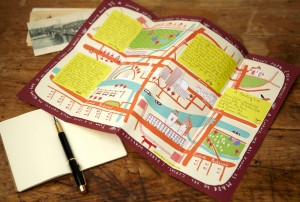
The City Of Inspiration Writing Map: Click here
Talking about new things… In March this year (2014) I started a monthly writing contest that links to the launch of a new Writing Map each month. The first 12 winners (two from each month) will be published in a new literary magazine that’ll launch in September. It’ll be called A3 and will be on an A3 page, like the maps, and will fold down to A6 (postcard size).
Maybe it has something to do with the way we carry our phones around with us, so much of what matters to us is in this one device… so the Writing Maps and the new literary magazine will be things you can carry around with you. I guess it’s my love of paper combined with the convenience of having inspiration and beautiful things with you at all times.
Publishing other people’s work, which I’ve been doing for over ten years, has always been about sharing exciting work that I’ve come across. Like, look at this amazing bit of writing I’ve just read! So the new journal will be very much about that. Often the most powerful writing comes out in the shortest time. It always energises me when you give people in a workshop a really simple prompt and in 5 or 10 minutes they create this moving and surprising work.
I want the Writing Maps to inspire that kind of writing! I’d love them to be the thing you carry with you wherever you go. I want the Writing Maps to inspire people to write stories or explore in deeper ways the stories they’re working on.
The whole idea behind Writing Maps is that the world out there is full of inspiration, that basically the world is one big creative writing (or drawing, or painting) prompt, and the Maps are made up of suggestions to channel that into stories, to make stuff out of what’s already there! Writing Maps are for anyone who is interested in writing and who is open to trying out new approaches to creating stories.
I think writers are always looking for new ideas for stories, or an interesting way to tell the next story, so hopefully the creative writing prompts Writing Maps will open up new possibilities for writing adventures.
About Shaun
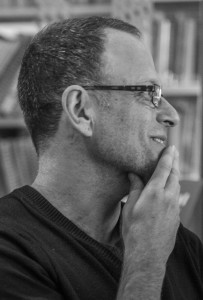
Shaun Levin is the author of five books, amongst them: Seven Sweet Things, Snapshots of The Boy and A Year of Two Summers.
His fictional work on the poet and painter Isaac Rosenberg has recently been translated into French and will be appearing in September 2014. His short stories and essays appear in over 50 anthologies and journals, and he was the founding editor of the literary and arts magazine, Chroma.
He launched Writing Maps in 2012, and is about to launch a new literary journal, A3.
No Comments
Thursday, August 7th, 2014
Welcome to the new PAPER THERAPY MANIFESTO. We hope you’ll enjoy using it.
Download your copy here.
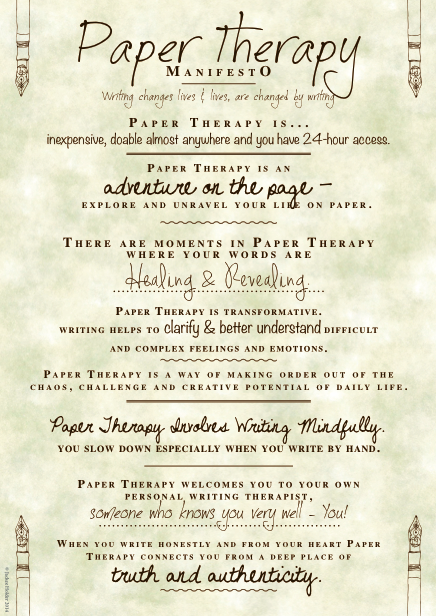
1 Comment
Sunday, August 3rd, 2014
My friend and fellow author Ji Hyang Padma author of the lovely book, Living The Season: Zen Practice For Transformative Times recently invited me to take part in a “Blog Hop”. It required answering some thoughtful questions on my writing life. Here’s what I had to say and a link to her blog, Natural Wisdom
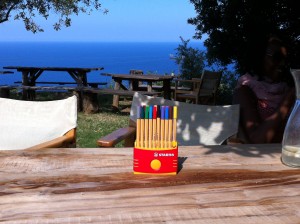
What am I writing/working on?
When it comes to writing I’m always working on something or other, whether it’s personal writing or writing for publication. Writing creatively in some form or shape is an everyday occurrence. I do feel lost without my journal, a blank index card or the Notes app on my iphone.
At the moment I have several writing projects on the go and many that are near completion or needing to meet a current deadline.
These include: Two articles for a print journal and an online magazine. The topics are: Exploring the impact of race and diversity in coaching and the second is a feature on Mindfulness for women.
I’m just putting the finishing touches to my latest Manifesto, Paper Therapy. We did have an original design but it didn’t make my heart sing so I put it away for a few weeks and then the other day on my travels I came across a design that gave me the ideas for a new look for the Manifesto which I now love. It’s just in time for a workshop I will be delivering at a summer well being festival here in the UK.
I have two online courses that I’ve written which require tying up loose ends and I’ve gifted myself the month of August to birth both of these projects. This is both an exciting and scary time for me as it is taking my work into new arenas. So watch this space.
As usual I’m late in completing the content for my website’s monthly newsletter. I just never seem to be able to generate this in advance. I’ve tried programming the topics in advance for the year but it felt really stilted and I found the writing didn’t flow. But part of me knows that I enjoy working close to the bone so I’m kind of accepting this and not nagging myself about it too much.
I’m playing with the idea of a submission of a ‘Wild Bio’ to a website where I can share more of who I am with a wider audience and an article/blog post on the writing retreat I led in Greece at the end of June, early July. I’ve been sitting with the idea for a few months now and the time now feels right.
I am off for the month of August, which I’ve dedicated as a month of writing. I’ll be staying in London but have planned to explore and hang out in as many London hotspots in nature and culturally as possible. • During my writing vacation I’ve set an intention to leisurely draft the synopsis for my new book whilst wandering and exploring. I’ve given myself permission to be relaxed about this. I’m not one of those writers who can write a book in 90 days. I need time and space and creative oxygen.
How does my work differ from others of its genre?
Personally I feel I have risen to my own personal challenge of breaking down that barrier of an assumption I carried that to be a coach who works in the corporate sector I have to present a certain professional image (what a load of crap). My challenge to myself was to be brave enough to talk and write about all aspects of my life and expose this on social media. This includes writing about spirituality, the creative process, mysticism and all things alternative that I have something to say about.
There was a time I believed this would go against me. Was it credible to call myself an executive coach and then in the next breath write blog posts about trees, poetry and sacred spaces? Was it okay to disclose that I have over a hundred journals, that I was ordained as an interfaith minister and that I love candles, incense and the moon?
Now I realize the gift writing continuously offers me is to not hide those valuable and essentials parts of the self. The more willing I am to reveal all of who I am including the shadow selves and vulnerabilities that are all a part of me, the more I connect to my wholeness. The better placed I am to model that for others, hopefully offering them permission to do the same. At the end of the day we attract the people and organizations that resonate with how we show up. We all have a magnetic transmission to attract our signature tribe. The key is to be authentic in your own unique way and that is what I aim for as well as I can on any given day.
Why do I write what I write?
On a daily basis I am inspired by nature and the creative process and how this influences our inner lives. I do not see this as separate from my work as a professional coach and speaker. I’m very connected to life’s finer detail, the subtleties, the deeper meaning of life. I capture much of what I see observe, sense, smell, hear and experience in my journal and notebooks.
This habit has helped me stay grounded, strengthen my resilience and expand the reach of my resourcefulness, which often generates a state of peace and calm even when things are turbulent and stressful. Noticing and writing about what I see, sense and observe as I go through my day brings life into full view.
I like that I have this private and wild world inside me that I can make sense of and integrate this into who I am being in all the different roles and persona’s that shape who I am in the world.
Writing helps me to bring both the inner and outer selves into greater alignment. I write about what I often do not say or share in public, in conversations and in relationships. Writing is my way of expressing my voice to myself so when I write I get to listen to myself first. It is a wider exploration of who I am that is often not afforded space in everyday interactions and conversations.
Writing provides a more fertile ground for what I want to say and who I want to be outside of my writing. How does my writing process work? I’m particularly skilled and confident about writing in-between the gaps during my day. By this I mean I don’t have to have designated set times and places to write. As soon as an opportunity to write shows up, I’ll grab it. Most mornings I write Morning pages as a way of clearing my psychological and emotional space. I find this extremely helpful and an affirming way of starting my day.
When it comes to writing projects I’m an advocate of writing those ‘shitty first drafts’. Getting anything down is a sign that I’m willing and ready to get going no matter how awful what I write is. This has served me a thousand times over and is the reason a body of writing work has developed and grown over the years.
I find the craft of shaping and moulding what I write satisfying even when the writing itself feels cumbersome and challenging (which it often does). I’m always trying to find that sentence or idea that I know will hit the right note or help the writing to sing. I guess I see and experience every piece of writing as a possible gift. There’s always the potential that somebody, somewhere will be touched by something that we write or share. This way I can give my work away knowing that it will find its way into the right pair of hand and eyes.
I have had the odd occasion where I have read a past journal entry in my own journal and thought how on point the person was who wrote the quote only to realize I was the author. This is an act of grace and humility and reverence for the writing process. We never really know what might be revealed that will surprise and astonish us, often when we least expect it.
I use everyday household duties as meaningful time for my ideas to percolate. The rhythm of routines like hovering, folding the clothes, filling my papers means my mind is free to go to work on bringing together and connecting ideas, firming up sentences and themes and creating structure and form so that when I arrive at the blank page or computer screen there is something there, a hook, a place to begin.
But then there are times when a writing deadline does not provide time for this kind of wandering without an agenda or a destination. This is when I write without knowing what will come and the writing guides me and shows me what wants to be written.
I’m a firm believer that writing as an art form is a mysterious process full of magic and wisdom that is greater than us. Other times writing pieces and projects are pieced together from scraps of paper, seeds from entries in my journals and notebooks or inspired ideas from quotes and books.
Some of the quotes I’ve collected on index cards go back years. I have an ability to remember a quote from ten years and can photographically recall the colour of the index card I wrote the quote on and what box it might be housed in. I’m accurate 98 per cent of the time.
I’m really motivated and energized to write when I’m traveling on trains, buses and driving in my car. I often park on quiet roads and write at the wheel. Or I park up early outside the train station before heading off to work and write my morning pages.
Everything around me is possible material for all of my writing and much of my writing is heavily influenced by what I experience in my day-to-day interactions.
I draw inspiration from beyond traditional and expected places like books, libraries or the internet. Inspiration and ideas can get sparked from a comment on the radio, a slogan on a billboard, a piece of overheard dialogue on the subway or dialogue and information gleaned from television or a movie. But I need to be receptive and open to receive, to notice and to capture it before it disappears and is forgotten. So I always have pen, paper or fingertips ready to get moving.
If you would like to read Ji Hyang’s “Blog Hop” response please click here to read and find out more about the wonderful work and teaching she’s doing.
What are some of the blogs you read?
Click to follow the links and read more:
The Vulnerability Project Click here , Laurie Wagner Wild Writing click here , Rebecca Campbell The Spirited Project click here , Suzette Clough Visual Medicine click here and Esme Wang click here
No Comments
Friday, July 11th, 2014
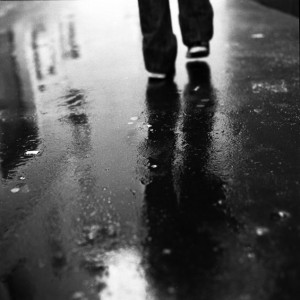
credit Chobonaut
This morning despite the pouring rain I set off on my morning walk. I did look like I was dressed for the North Pole with two hoodies on tied up as far up my neck as possible.
The rain was heavy and the walk was a soggy plod up the hill and then onto the main road as I walked the route that would take me around 50 minutes back home.
Whilst walking I got lost in my thoughts and one of those thoughts was how often I don’t feel like writing and that it regularly feels sluggish and slow and doesn’t make much sense. A bit like how I was feeling in the rain this morning. But once I got into my stride, despite the rain pelting down I began to not even feel or notice the rain.
Instead I became more aware of my environment. My nose tingled at the woody scent of the man’s aftershave who walked past me at the bus stop. I began turning over a difficult personal challenge I need to try and resolve between family members and I smiled at the numbers of people I passed without coats, jackets or an umbrella in sight who I guess have some secret weather forecast that the rest of us know nothing about.
Sometimes writing feels awkward and clumsy to begin with. You definitely don’t feel like doing it but you hit the page anyway. But even then nothing you write seems to make much sense but you keep going and then at some point often when you least expect it you hit a word or sentence or maybe an idea that contains a seed of something, that leads to another thought or idea. And like I experienced on my walk this morning you start to loosen up.
About ten minutes into my walk I unzipped one of my hoodies. I’d started getting hot and my pace quickened. At the same time without any deliberate effort I came up with an idea for the family dilemma. I’d found a groove despite the rain and the damp weather.
For years writers have been telling us that rough drafts work. Rough drafts get us going as choreographer Twyla Tharp commented on in her book, The Creative Habit, “Starting is not the same as beginning.” But too often we’re over ruled by the cultural pressure that sends out the message that from the word go we somehow need to be perfect on the page, first time round. We stress ourselves out by believing that those first rough drafts need to arrive on the page as polished pieces. Nothing could be further from the truth.
Messy, incoherent writing is often what gets us going and is the place we start from that will eventually if we persevere and stay with it that leads to a finished article, that post for your blog, the first chapter of a novel or short story, the report for work or an entry in your journal or notebook.
If you’d like some support with how to get going with your writing, or how to stay with it then over the summer there’s opportunities to attend the following workshops with me where I will share tips and techniques for getting starting and staying on the page.
On 24th July I’ll be leading an evening workshop entitled from Zero To Hero click here for more details: https://www.eventbrite.co.uk/e/from-zero-to-hero-how-to-start-writing-with-confidence-with-jackee-holder-tickets-12164637759?ref=estw
On August 8th I’ll be in Oxford leading a Paper Therapy workshop at the Wilderness Festival http://www.wildernessfestival.com/programme/now-live-events/ One on one slots with me are also available at the festival.
Finally if you’d like to spend a day with me I’ll be leading a one day Write Yourself Well workshop (based on my book 49 Ways To Write Yourself Well) on October 11th for Alternatives http://alternativesevents.org.uk/event/jackee-holder-write-yourself-well/
No Comments
Thursday, July 3rd, 2014
Today’s guest post is the second post from Janet Limb who joined me this week on the Inside Out Writers Retreat here on Kalikalos, Greece. In this post she tells of meeting with her writing hero, Elizabeth Gilbert. They hit off when Liz comments on the blue mascara she’s wearing.
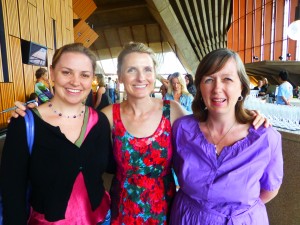
The face staring down at me from the poster looked strangely familiar. My mind was blank as I walked towards it, someone I went to school with perhaps? I teach evening classes, so an ex student? The inviting, smiley face was getting closer; blond hair loosely tied back; a casual pose, head leaning to one side; this woman looked really at peace with herself.
I had my gap year a little late at aged 48 to be precise. Marriage and children had passed me by and I hated my job at the NHS so the answer seemed simple, pack it all in and go off travelling. This is your ‘Eat, Pray, Love’ year a friend joked.
Sydney was breathtaking and ignited my fire again for exploring cities. I stayed with a friend in the suburbs and caught the train into work with her on my first day sightseeing.
I walked from the train station alongside the beautiful Hyde Park and following my nose turned left, dropping down some steep steps and into the world famous Sydney Harbour. I did actually gasp, as it was so beautiful. I felt like I was on a movie set and fate had given me the perfect day, sunny, not too hot with deep blue skies.
A stream of yachts and boats drifting like froth on the water, gorgeous little cafes and restaurants skimming the harbour, a healthy hustle & bustle of tourists and business people.
The opera house, striking against the Sydney skyline, the outline of a sailboat. I returned to this spot again and again over the next few days mesmerised.
I walked all around the opera house and it was along one of the walkways that I saw Elizabeth Gilbert staring down at me from a poster. I knew then I had to get tickets to her talk for my Sydney friend and me.
The event was seven years after the publication of Eat, Pray, and Love. Would she have lost her motivation to do anything else I wondered? Now married, wealthy, played in the film by Julia Roberts (no less) maybe her mojo had gone? I hoped for someone inspiring and I was not disappointed.
Witty, funny, self-depreciating, humble, modest, all words I would use to describe Elizabeth Gilbert. I saw no hint of ‘superstar’, she was so refreshing normal and down-to-earth. She laughed and joked.
When asked what keeps her awake at night she replied that in her early forties she had to accept that her best work (Eat Pray Love) may be behind her (what a problem to have we all thought).
She told us she became a writer because that’s what she had always wanted to do and because she can’t do anything else. She told her funny story of being on ‘Oprah’ for the first time and saying something dumb to the great woman. Self consciously trying to make conversation during the commercial break she told Oprah that her shoes were from Paris, and then emphasised that Paris is in France. ‘Really’ was the sarcastic reply from Oprah.
The most interesting thing was she was remarkably frank about her writing journey, which for an aspiring writer like me was just gold dust. She told us the story of her struggle, yes readers – Elizabeth Gilbert ‘struggled’ with her first book.
She told us how it was tortuous to try and write a novel and after sixty pages she ‘gave up’, put the manuscript into a drawer and forgot about it. The next phrase she uttered has become my mantra. She told herself ‘I am not going to be the sort of person who dies with sixty pages of a novel in the drawer unfinished’.
As a result anytime I’m struggling with something, I say this to myself, ‘Janet, do you want to be the sort of person who dies without (insert thing I am struggling with) going to the Holy land, learning more about astrology, writing that article/ short story/ blog?
The end of Elizabeth’s struggle story is a happy one. She finished her first novel ‘Stern Men.’ It is published and after two other novels she writes the mega ‘Eat Pray Love.’ The rest as they say is history.
After the talk she invites us not to the usual ‘book signing’ in the foyer, we are told that Elizabeth Gilbert will be meeting people in the foyer. What an invitation I thought. My friend frowned when we saw the queue and questioned wearily ‘really Janet?’ I knew I had to stay and I’m so glad that I did. We were the last two people to meet Liz (I feel we are on first name terms now).
She didn’t appear worn down by all the same sort of questions that people asked ‘How are you and Felipe (the man she marries)?’
I asked simply if we could have our photos taken with her and we did. Liz admired my dress (a new shirt dress purchased in a discount store in Sydney for a bargain $20) as we stood side by side she glanced at my eyes and she complemented me on my violet mascara which she said made my eyes look so pretty. I told her I love colours after having my colours ‘done’ 12 years ago and she said it showed (ah). Such a down to earth conversation from such a famous woman. Liz Gilbert likes my mascara!! – Hope she likes my first book!
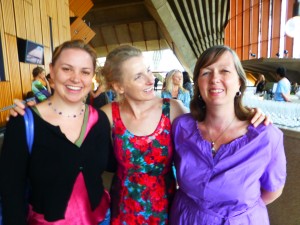
P.S. Elizabeth Gilbert’s website contains her ‘thoughts on writing’ – all very amusing. She tells us, ‘The more important virtue for a writer, I believe, is self-forgiveness. Because your writing will always disappoint you. Your laziness will always disappoint you. You will make vows: “I’m going to write for an hour every day,” and then you won’t do it.
Above my desk now is a card, which boldly states ‘I forgive myself’
No Comments
Tuesday, June 24th, 2014
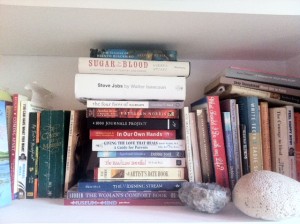
In 2011 the self-help book industry in the UK was estimated to be worth at least 6 million pounds, whilst in the US its value was around the 10 billion dollar mark.
I’m one of those millions of readers who have invested significantly in both of these markets. Over the course of twenty years I’ve deposited at least £5,000 of my personal income into purchasing hundreds of self-help and non-fiction books, which now fill one and half rooms of my home in South London and growing.
But is this a chronic case of shelf development or self-development? A point brought home recently at a talk the editor in chief of the Huffington Post, Arianna Huffington gave in London.
The question posed by a woman journalist in the audience went something like this, “with all of this information and articles on well-being most people aren’t doing anything with what they’re reading.”
I sensed an air of unease amongst the audience as she launched into a long, rambling and sometimes repetitive explanation, which despite its obvious flaws in presentation was at the core, a great question.
Her question played on my mind on the drive home from the event. It was a question I had posed to myself many times before particularly when remembering the over burdened shelves of books in the two rooms in my home, claiming every imaginable wall and shelf space.
The question begging an answer was, “How much had I really changed as a result of the hundreds of books I’ve read over the years?”
Had I really been conning myself? Had I grown victim to giving away money that simply wasn’t worth the paper it was written on? And if my self-help book addiction was anything to go by, maybe I had fallen victim to what Professor Timothy D. Wilson describes as the 18 month rule – which is the person most likely to buy a book this week is someone who bought one 18 months earlier. Only my gap between purchases was more like two weeks than 18 months.
So how can you ensure your self-help books don’t end up as shelf development?
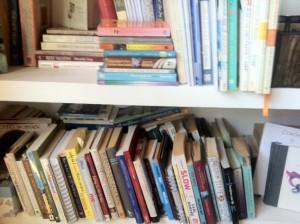
1. Choose self-help books, which include research of some kind to evidence the techniques and models presented. Two of my four books contain references to research. 49 Ways To Write Yourself Well, my third book is based primarily on research into the therapeutic benefits of writing.
I remember one of the first comments the course director, Simon Western on my post graduate qualification in coaching at Lancaster University made to our group was that, “ too many coaches had abandoned, left brain, critical thinking in favor of right brained, positive thinking, but we need both.”
I think the same is true of the self-help industry. For self-help books to not sink but swim then they need to include research and scientific data that validates the content and numerous claims made.
2. The majority of self-help books glibly evade writing about and helping the reader accept that pain is part of life and avoid dispensing tried and tested advice on how to respond and be with pain.
Self-help books that tell the truth are empowering. Trying to gloss over life with suggestions and activities that are surface level is both ineffective and unreal.
Author of one of the more recent best selling self-help books, This is How, by Augusten Burroughs (which by the way I do recommend) describes this as, “So certain feelings are denied. Which is something like believing your house is clean as long as you don’t peek under the bed.”
According to psychologist Oliver Burkeman, “instead of trying to psych yourself up into the right mood to act, learn to act alongside whatever mood you’re in.”
3. Be willing to put in the work. Most of the time it’s not that a self-help book doesn’t work. It’s that we don’t do the work that will bring about the change. “Real optimism is not the pep talk you give yourself. It is earned through the labor of emotional housekeeping,” writes Augusten Burroughs in,This Is How.
We kid ourselves that the sheer act of reading alone will somehow miraculously improve our lives and fix us in an instant without the need to lift a finger.
Some books do put me in a hypnotic trance for a moment or two (think Saved By A Poem by Kim Rosen and One Continuous Mistake by Gail Sher) but the trance soon wears off and then the challenge is to get down to work.
Fear is often the cause of our resistance to putting in the work. In her chapter, Reflections On Learning To Work, included in the book,Working It Out, psycholinguist, Virginia Valian describes our obsession with speed and production, “The culture decrees that you should do what you are good at, rather than what you most like to do; that what you produce rather than what you get out of what you produce is what counts; ….”
So often it is the application, what you get out of what you produce [or do] that creates the change or shift.
The introduction to Valian’s chapter gets straight to the point, letting the reader know exactly what reading the chapter will not do. “It will not remove your self doubts, resolve your inner conflicts, wipe away your anxieties, or eliminates your periods of mental paralysis. It will not wave a magic wand and turn you into someone who works effortlessly for hours everyday.” More self-help books should come clean like Valian does.
4. The best self-help books will address relapses and setbacks as well as provide you with further information on where to gain professional support on taking the work further.
Seek out books that include all of the above and next to your book make sure there’s pen, paper, notebook or your digital recording device. Make a note of all the actions you take and record the impact no matter how small.
As Mark Matousek, author of, When You’re Falling Dive said in a recent workshop, “dig in one place.”
I suggest to you and to myself to read a self-help book as if you’re digging in one place. Give it your full attention and focus. Test out the suggestions. Make a note of what works and do more of it.
Maybe there’s one suggestion in the book that turns out to be a real gem. Hold onto it, discard the rest and start applying what works.
As they say you can take a horse to water but you can’t make it drink. One could say the same for all the books in my collection. Put it this way if I was forced to choose a handful of books from my collection to take with me to a desert island you can bet it will be those titles where I’ve continuously put in the work, reflected on my actions and made changes and shifts as a result.
What’s the one self help book that has had the greatest impact on your life to date?
My answer:The Artist’s Way by Julia Cameron
Why: The practice of Morning pages has become a way of life for the last twenty years and is at the roots of my tag line for my business: Writing changes lives and lives, are changed by writing.
No Comments
Monday, June 23rd, 2014
Welcome to the first of two guest blog posts from Janet Limb about meeting two of her favourite authors.
Her post made me ask the question: What’s the one thing on my bucket list that won’t go away?
I have a bit of a half hearted ‘bucket list’. Not really being a thrill seeker it hasn’t always gone that well. I tried skiing once and hated it. The horse ride along a golden beach at sunset ended abruptly after the horse threw me off and I gave up on the Red Sea scuba diving course, after two days I felt claustrophobic in the diving suit.
The thing that doesn’t go away is the desire to meet my ‘writing heroes’
In July 2012 and I went on a writer’s retreat with Jackee Holder at the beautiful Orthona Centre in Dorset. One of our afternoon assignments was to write about a favourite book.
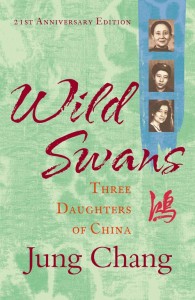
I closed my eyes and a title grabbed my attention; ‘Wild Swans’ by Jung Chang which I’d read almost twenty years previously so it wasn’t an obvious choice. At the time I felt like I didn’t so much read that book as it read me. It was my companion on the long tube journey to and from work; several times I missed my tube stop as I was so engrossed.
Wild Swans; Three daughters of China was an astounding story of three female generations of a Chinese family; Jung Chang (the writer) her mother (a communist in the revolution) and her grandmother (concubine to a warlord).
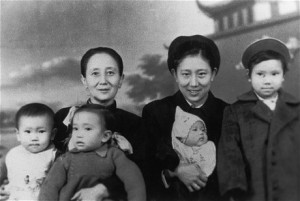
Almost two years after the writers’ Retreat I’m sitting in front of Jung Chang herself at the Charleston literary festival near Lewes. I can hardly breathe with the excitement – looking at one of my writing heroes.
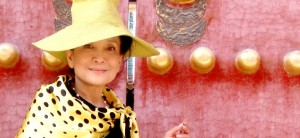
Jung Chang reminds me of a beautiful bird, a nightingale. She looks nowhere near her 62 years. She is gorgeously dressed in a traditional Chinese costume of the period of her new biography (The Empress Dowager Cixi: The concubine who launched modern China). She laughs, she chatters, she’s so knowledgeable and passionate about her subjects. She tells us her books are still banned in China; her dearest wish is for her ‘Wild Swans’ to fly in the country of her birth.
As I listen to her I remember my vision at the writers’ retreat two years earlier, I realised then that there is a story to tell from the women in my family. My mother, grandmother and my own story, and the men that betrayed us, generation by generation. Set against the back drop of two world wars, the post war recovery of the 1950’s and my family’s rise out of the grime of factory life in the working class. After that writers’ retreat that story faded away and life carried on.
Now sitting here at the upmarket Charleston literary festival so much a contrast to the grey Midlands city of my birth I realise that this story is still very much alive in me. Whilst my mother and grandmother always joked of writing a book, the baton has been passed firmly down the generations to me.
Jung Chang tells us that she always wanted to be a writer and had to escape to the west to succeed. It was an impossible dream in China, aged sixteen after first daring to write a poem on paper she had to flush it down the toilet to avoid it being found during the frequent Government raids on the family apartment.
Even after living in the UK for several years she could not write, who could blame her for her writers’ block! Many years later her mother’s first visit to the west provided the motivation and the seeds for Wild Swans which became (according to the Asian Wall Street Journal) the most widely read book about China. My excuses for not writing seem pallid in comparison.
After Jung Chang’s excellent talk I buy the 21st Anniversary Edition of Wild Swans. Jung Chang signs it proudly, her name first in English and then Chinese. I thank her for writing the book and in turn inspiring me to write my family story.
She looks at me and points her pen. ‘When you start looking in the family history, you find that there are interesting stories to tell’ she says. Her eyes glisten when she speaks and I know she is so right.
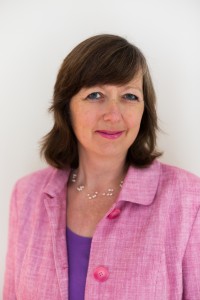
About Janet Limb
As a child Janet Limb was always reading and dreamed of one day becoming a writer. Aged 50 this year she decided it was finally time to pick up the pen and have a go. She lives in a beautiful Sussex village and works for the NHS as a day job. Janet will be joining me this Friday for the Inside Out Writers Retreat in Greece. I’m looking forward to the unraveling of her stories.
No Comments
Monday, June 9th, 2014

Yesterday I took a few hours out and wandered around Spitalfields market in East London. I got there early before the crowds descended on what turned out to be a gorgeous, sunny day.
Just wandering without much of an agenda was totally relaxing and freeing. I had a full on week and spent alot of time in the company of other people. I was hungry for time with me and it was what my Imind needed, some me time. I really like the idea of wanderign around anonomous surrounded by people and was a great way to.
At one point I sat down at a bench in the middle of the main market square and write. It felt natural and safe. The noise around was strangely comforting and I must have tricked my inner critic into turning a blind eye and into believing that I couldn’t write under such conditions.
On my way in towards the main square I passed a graffiti artist at work adorning a brick wall and by the time I had returned his work was done.
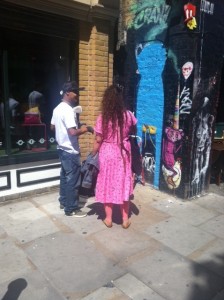
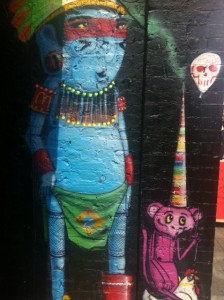
I had gone on what writer and creative writing teacher Julia Cameron calls taking an Artist dates. An Artist dates is an appointment with yourself where you go and visit different neighbourhoods or take yourself of to a museum, art gallery, show or whatever takes your fancy. But you must do it alone.
Wandering allows me to empty. It opens me up making it possible for new ideas to come to my attention with very little effort on my part. My wanderings had warmed me up and stimulated my creative juices. In between wandering around I kept receiving sparks of ideas and solutions.
- This week why not book yourself in for an artist date?
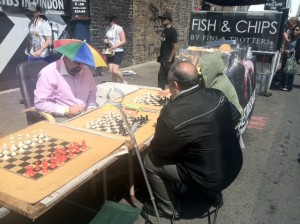
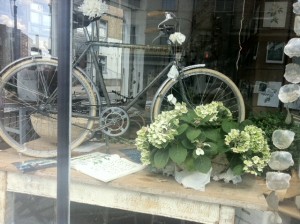
No Comments
Wednesday, May 28th, 2014
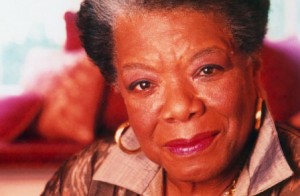
I was seventeen and at my best friends house for her seventeenth birthday party. Despite being really good friends I couldn’t bring myself to share with her what had happened to me when I was aged seven, such was the shame and guilt I had wrongly heaped upon myself.
But my friend, her name was Jennifer was not only very smart, she was also very intuitive and in the middle of her birthday celebrations she handed me a book and said to me with compassion and conviction, “I think this book will help you.”
The book my friend gave me that day was I Know Why The Caged Bird Sings by Maya Angelo. By the time I woke up the next day and opened to the title page and read her inscription:
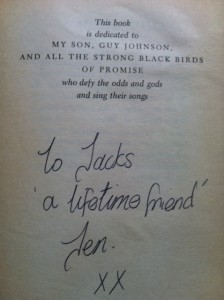
This book
is dedicated to:
MY SON, GUY JOHNSON
AND ALL THE STRONG BLACK BIRDS
OF PROMISE
who defy the odds and gods
and sing their songs.
I was hooked. Do you know that feeling you get in your tummy when you know you’re onto something but you don’t know exactly what? When turning the page of the book feels exciting, an adventure in print, filled with anticipation and not knowing all wrapped into one. That’s what it was like as I began reading.
Up until that point in my life I had never read a book by a black author, someone who had the same skin colour as me. The fact that Maya was a black woman was in my mind revolutionary, a revelation and at the same time deeply affirming.
In a moment my perception of what was possible for me to achieve and become in my lifetime, changed fundamentally. If Maya was similar to me and could write and be published then maybe so could I. Maya planted the seed.
Reading on I discovered from those very first pages how much we shared in common. Even though we lived thousand of miles apart in different countries and in geographically very different landscapes.
I lived on the edge of London in what my friends at the time called the suburbs and Maya had grown up in the rural South. We shared the experiences of racism also Maya was at the deeper end of living in the segregated South.
Where our lives joined was that we both grew up in the arms of the black church, hers rural, mine in the inner city. Where our lives deeply connected and became the medicine because Maya told the story I so needed to hear was our shared early childhood trauma experiences of sexual abuse and rape.
Reading Maya’s story was medicine for me. Here was a woman, not so different from myself having the courage to tell her story despite her rapist being found dead after she revealed his name and her not speaking for five years because she believed her voice had the power to kill.
There it was in print for the world to see. She had thrown light on her story, taken it out of the dark and made it visible. There it was in black and white print. Her story could not be erased. It was a powerful early lesson demonstrating how writing about our wounds heals.
By sharing the story of being raped Maya bought my story out of hiding. For so long I had imagined that I was a freak, that I was alone in my suffering and that I could never recover from what had happened to me. Maya’s story offered me the possibility of a new and different ending.
By the time I had gotten to the end of the book I knew I wanted to write. I wanted to write and share my story in the hope that my words would touch the souls and spirits of other young women like myself who were living in a prison of shame, guilt and feelings of worthlessness.
Such was the impact of Maya Angelou’s story and the subsequent volumes of her autobiography and poetry that when my daughter was born in 1988 I named her Aida Maya after my sheroe.
Twenty years later after first reading I Know Why The Caged Bird Sings I wrote my first book Soul Purpose, which was also autobiographical. On page one I dared to write about what had happened to me even though at the time I wasn’t willing or should I say ready to go into the fuller details.
But there’s no doubt in my mind that reading I Know Why The Caged Bird Sings was the catalyst for writing my first book and for me having the courage to reveal what had happened to me. Maya had planted the seed. She awakened the thirst in me. She made me hungry to get to know myself by writing and claim a life as a writer and a story teller.
Years later thanks to the generosity and friendship of Tony Fairweather from the Write Thing literacy agency I got to meet Maya several times when she performed in a regular show she did when in the UK at Lewisham theatre in the heart of South London.
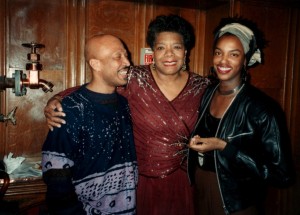
Over the years I’ve met many writers and authors that I’ve admired and have been as equally disappointed by some of the behaviour and attitudes displayed off stage.
But not Maya. She was exactly as she was on stage as she was off. She was open, warm and welcoming. She would not favour one person over another. When she spoke to you she gave you and only you her undivided attention and presence. She would call us by our names in the deep velvet, honey voice that was loved and admired.
At the after show receptions held for her she stayed until the last hand was shaken and the last person spoken with. Such was her presence, her grace and her generosity of spirit.
When she spoke with you it was that same dialect, the same tone and pitch that would have you rocking in your seat as she recited the words of one of her poems,
You may write me down in history
With your bitter, twisted lies,
You may trod me in the very dirt
But still like dust I rise.
I cannot tell you how many boardrooms and corridors of power where the words of that poem vibrated in my head causing me to anchor my feet to the floor and stand my ground and find my voice. It was Maya coming to my rescue, helping a sister out, her voice singing in my ears.
So Maya is no longer with us but she has left behind a rich legacy in her stories, her writing, her poems and the multitude of speeches and talks she gave in her lifetime.
I am deeply thankful for her life and the impact her story had on me as that young seventeen year old. I am thankful to my dear friend Jennifer who had the foresight to reach out to me through Maya’s book.
This life is but a feather in the wind. At some point we all cease being in this form, in this body. But whilst we are here with breath still in our bodies, still able to move our hands and our finger lets remind ourselves how much our lives matter, our stories matter. Writing and telling our stories matters.
When we write the truth on the page it will be medicine for someone, not everyone, but someone somewhere, will be touched. So we have to write. We must write. We must share and tell our stories.
Writing changes lives and lives are changed by writing is my strap line, and Maya Angelou is a testimony to this.
MAYA ANGELOU
April 4th 1928 – May 28th 2014
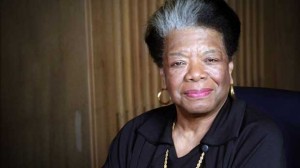
No Comments
Wednesday, May 7th, 2014
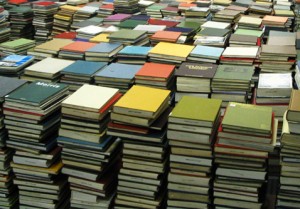
This is quite a long blog post, which had not been my intention but I think if you stay with it you will find it really helpful in getting clarity on what it takes to turn pro (thanks to Steven Pressfield).
The Back Story
Last week I was doing research for a tele-class I was co-presenting on.
I had finally gotten myself to my desk to do the serious work of putting my ideas together. I always convince myself I have not really done the work if my ideas come to me when I am washing the dishes, driving in the car or just pottering around the house.
So there I was facing the computer screen about to press the magic button to dive into the bottomless pit of information Google, the digital world’s modern day oracle.
So I’m sitting in front of the screen. I type in the words of my subject, which was around ideas for ‘creative endings in coaching relationships’.
I type in the words, and within seconds Google pops up its result. I can feel the stress easing away as I convince myself the digital oracle of Google will now point me to that killer material that will take the material I’ve already gathered from good to great.
The Big Forget
I turn to the screen for closer inspection and there in the number three position on Google is a blog post with my name on it. I do a double take. Really? It’s there in black and white and I’m stunned.
I can honestly say that in that moment any memory of writing that post, gathering all the juicy information I then found I had written about once I had gotten over the shock, had totally escaped the vast memory banks of my mind.
I was gob smacked. One because I clearly wasn’t remembering and keeping track of the material I was putting out there in the world but most importantly I realized that whether I had done it consciously or not I had arrived at that place Steven Pressfield writes about in his book, Turning Pro: Tap Your Inner Power and Create Your Life’s Work of Turning Pro!
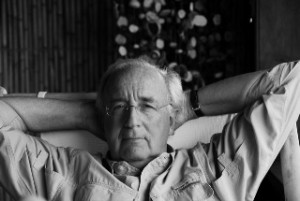
On Turning Pro from Steven Himself
In Turning Pro Steven Pressfield writes,
“ Resistance hates two qualities above all others: concentration and depth. Why? Because when we work with focus and we work deep, we succeed.”
“ When we turn pro everything becomes simple. Our aim centers on the ordering of our days in such a way that we overcome the fears that have paralyzed us in the past.”
We now structure our hours not to flee from fear, but to confront it and overcome it. We plan our activities in order to accomplish an aim. And we bring our will to bear so we stick to this resolution.”
“ The Professional ……… he knows that when the Muse see’s his butt in the chair, she will deliver.”
What I Now Know For Sure
For the last two years I’ve noticed a shift in me when it comes to my work as a writer. No matter what is going on in my life the one thing that remains constant is writing.
- In the space of two years I’ve completed four e-books, one published print book, near completion of two digital online courses and filled the pages of ten or more journals and business journals and that’s for starters.
- I write whether there is a financial compensation or not and more often than not there’s no payment in sight.
- One hundred percent of my writing content on social media and the e-books I have published are free material and I pay to get all my e-books professionally edited and designed. I’m willing to write no matter what.
I’ve arrived at a place where the process of turning pro has generated a solid body of work. There are some interesting benefits to be had when this happens. Here’s what I’ve noticed and now know for sure:
- You get to a place where you can start to creatively re-position material. Material from an e-book can be easily repositioned as content for a paid online e-course. Material from a print book can be creatively extended and expanded on for a magazine or online article or feature.
- You realize that you can develop ideas and not everything is about starting from scratch with completely novel and original ideas.
- You start to value your material and how you have put things together. Having this body of work and turning pro means that I’ve become more organized so I can find content, link material and get stuff out to people quickly because what I need I’ve already created in that body of work.
- You realize that you take to the page with very little resistance 9even when you don’t feel like it and there isn’t enough time). I’m noticing how often I arrive at the page or computer screen with a skip in my step.
- In my case I‘ve noticed that even though there’s a few things in my life right now that could be better writing makes me happy, so happy I could sometimes cry from the level of real joy and satisfaction I get from having a career that leaves me feeling so fulfilled and satisfied.
- The more I write and share the clearer I get on what 20% of my actions bring about 80% of my results (Pareto Principle).
- I don’t take failure personal. If a piece of writing or work is not accepted I get right back out there and cast the net and explore to see who else might be interested. The territory of the pro means being open to rejection, to not being part of the in crowd and sometimes having to go it alone.
- My commitment to the regular practice of writing now means I can write articles, features, blog posts and just about anything in less and less time using the principle of (Parkinson’s Law). The idea being that we complete an action based on the amount of time available. If you have 5 days you will use 5 days to ruminate, think over and take the time to get the task done. If you have 5 hours to get the same task completed then you’ll adapt and get the task completed within the 5 hours you have.
- I’ve given myself permissions to do things imperfectly. I recently recorded a series of video interviews for my on line journaling writing programme. I record the interviews on my MacBook Pro in people’s home and I don’t edit. This means when we press the stop button at the end the video is complete and I know I can add this to my body of work. However the more interviews I do the better I will get as a pro, the more I’ll learn and over time the quality of my videos will change. But for now what I do is good enough.
My One Disagreement With Mr Pressfield
There’s only one point in Turning Pro where I disagree with Pressfield where he writes, “ The amateur tweets. The professional works.”
I think we can do both. I spend less than an hour on Twitter every three to fours days but what works and makes giving over this time worthwhile is being focused on sharing your body of work with others, commenting on the things that interest you and make connections with others who you would not normally come into contact with who are aligned with your body of work. Tweeting is an effective way of finding your tribe but it’s not a replacement for the work.
I’m now at a point where when someone asks me to write an article I smile. I’m a pro. I turn up and do the work. It’s hard work but I love it.
Turning Pro. What Will It Take?
- What action would take you from amateur to pro?
I recommend reading Steven Pressfield’s books Turning Pro, Do The Work or The War Of Art Click HERE to visit Amazon
No Comments
